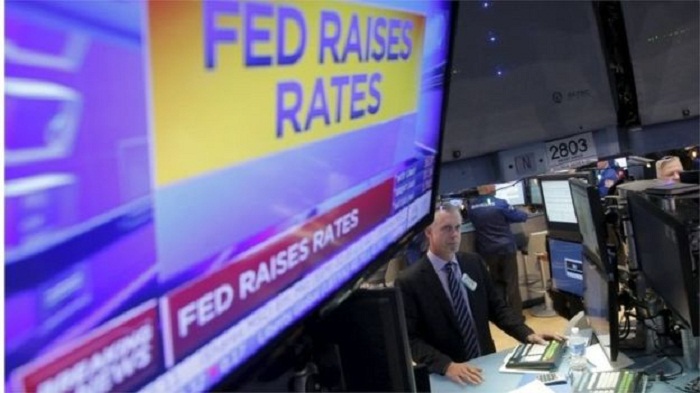Policy makers pointed to the lower number of unemployed workers, increased spending by households, and bigger investments by businesses in recent quarters.
"The labor market has continued to strengthen and ... economic activity has been rising at a solid rate," the Federal Open Market Committee said in a statement following its two-day meeting.
The federal funds rate, which helps determine rates for mortgages, credit cards and other borrowing, will now hover in a range of 1.25% to 1.5%. Overall, rates are still historically low.
Two Fed officials dissented on the decision: Chicago Fed President Charles Evans and Minneapolis Fed President Neel Kashkari, who felt policy makers should wait longer before raising rates again.
This is the fifth time the Fed has lifted interest rates since the 2008 financial crisis. Policy makers plan to raise rates three more times in 2018, and then twice in 2019.
Central bankers, under the leadership of outgoing Fed chair Janet Yellen, have moved patiently to maintain economic growth at a steady pace. They have kept a watchful eye on inflation, which has run below expectations.
President Trump nominated Fed governor Jerome Powell in November to take over when Yellen ends her four-year term on February 3. It's largely expected that Powell will stick to a playbook similar to that of his predecessor, who was named to the post by former President Obama. Yellen was the first woman to serve in the role.
Top Fed officials have been mystified about why inflation, which reflects the prices of everything from meat and cheese to houses and cars, has fallen short of the Fed's goal of 2%. That's what the Fed considers healthy for the economy.
In deciding to slowly raise rates over the past year or so, the Fed has weighed competing forces. Stubbornly low inflation and consumer prices suggested the Fed should hold off on raising rates. But steady economic growth and low unemployment suggested it should act.
Yellen has described inflation as something of a "mystery" but has signaled she expects it will stabilize over time.
It's the job of central bankers to shift policy levers, nudging interest rates higher and lower, to boost jobs and keep prices, or inflation, at the optimal level. That means not too high, and not too low.
When inflation is too low, it can hurt the economy. Businesses get queasy about investing in people and equipment. If prices don't rise, wages don't either.
Some Fed officials have warned against raising interest rates until inflation meets its target.
On Wednesday, the Fed said it continues to expect inflation to remain below its target, at 1.7%, and the unemployment rate to be 4.1%, based on its updated economic projections.
Policy makers raised their expectations for economic growth in 2018. The central bank now expects the economy to grow at a slightly faster rate of 2.5%, compared with a previous forecast of 2.1%.
More about: #Fed
















































